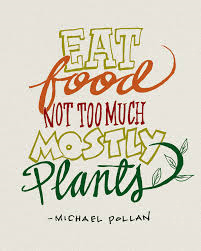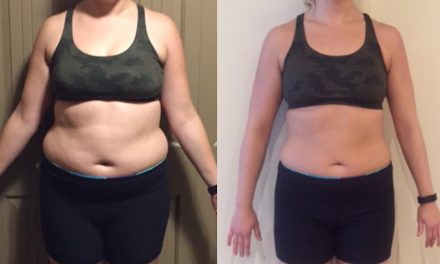I know what you’re thinking. How can something that’s healthy possibly make me fat?
Food choice and quality, above all other aspects of nutrition, are the first things we teach our clients; what you eat is initially far more important than the timing or the quantity of consumption. Often the first step is helping clients make the switch from sandwich heavy lunches to big hunks of protein and copious amounts of veggies.
But at some point, quantity does matter. Remember Michael Pollan’s famed line from ‘In Defnese of Food:’
“Eat food. Not too much. Mostly plants.”
(I’d add to that “plenty of protein” but that’s a discussion for another day.)
The truth is, just because it’s “healthy” doesn’t mean that it will promote optimal health. Not to mention, over consumption is certainly not going to promote fat loss; too much of anything is going to throw you off balance. Binging on healthy food is not a habit that you want to cultivate, regardless of how harmless the food itself might seem. I’ve have been there, and yes it made me fat.
So that leads me to the question, what is the healthy food that is actually making you fat?
Well, simply put, it’s the one that you eat too much of. The one that you can’t stop eating. The one you eat in excess, all the while convincing yourself it’s okay because it’s “healthy.”
You know exactly what I’m talking about. For some, it’s almond butter. For others it’s protein pancakes, Quest bars, trail mix, or dates. I’ve run the gamut on trigger foods (I once ate three Quest bars in a single day, on top of my regular meals), but my most recent obsession was dried mango. Let me take you back to the dried mango obsession days…
Dried mangos… holy ish, why are they SO EFFING GOOD? Now, of course I would buy ‘healthy’ dried fruit with no added sugar, sulfur, or preservatives–you know, the real stuff, where the label simply states “mangoes.” I threw it in my shopping cart primarily for my Monkey husband as his high carb off season allows for a lot of ‘healthy’ sugar bugs; and well… he loves it, and really will eat only 1-2 pieces (kids and men are amazing with portion control). But somehow it kept ending up in my mouth.

Dried mangoes were sabotaging the hell out of my nutrition. And I was sabotaging the hell out of myself.
Why?
Well, it’s pretty simple:
CAN’T. STOP. EATING.
No matter what I did, I end up binging on these succulent yellow slices of deliciousness. I just couldn’t S-t-o-p.
There are two significant problems with this seemingly innocent dried fruit obsession:
The first of these problems is lack of satiety. Because it’s dehydrated, all the water content of fresh fruit is not present, subsequently not making you feel full. So you just keep going back for more (and more, and more) because you’re not sated. Oh, and because it’s delicious. So very delicious.
But the second (and more pressing) issue with dried fruit is that I lie to myself. I tell myself that it’s better than eating candy (and of course, it is), which erroneously gives me license to overindulge.
It’s still overeating. It’s still obsessive behavior. It’s still not in line with the harmonious relationship I strive to have with food. I don’t enjoy feeling as though I am fighting with myself over food; I prefer peace. I prefer effortless, relaxed eating.
If I study my past, I realize I’ve been here before. In fact, I actually wrote a blog about overconsumption of healthy food when I came to grips with my almond butter addiction. Nut butter and I are on good terms now, but it took a lot of time and a lot of practice. I needed to first identify my behavior, then remove the substance, and lastly affirm that I am not-in any real way-deprived without it. Once you’ve done all three of these things, you can consider reintroducing the food in small quantities.

Identify the Behavior
This is always a difficult thing to do given that awareness is often closely trailed by judgement.
Not to mention, you’ve most likely been lying to yourself. It’s okay if I eat five, I mean they’re PROTEIN bars, right?! But it isn’t necessarily okay, because you can’t stop–and not feeling in control of what you eat is really quite destructive for your overall well being. If you can’t refrain from consuming it, it’s a trigger food. And no matter how “healthy” it is, trigger foods are just as detrimental as junk foods when it comes to not only your body composition, but more importantly, your mindset.
You’ve got to face it. You’ve got to say it out loud and affirm that this otherwise healthy substance is becoming a problem for you. Once you’ve identified and confronted the issue, you can begin the journey towards correcting it.
Get it out of the damn house!
Once you have identified and acknowledged the trigger food, get it out of the house completely. Don’t rely on willpower. Don’t allow it to taunt and tempt you. When you’re deeply involved in anything, willpower is a waste of time. You’ll end up hating yourself if you slip, subsequently judging and cursing yourself for not having more “willpower.” Just get rid of it. Research (and common sense) shows that people are less likely to eat something if it’s not as easily attainable.

Sometimes a family member might object to the elimination of your trigger food, creating additional obstacles. This is where you need to be resolute. Kindly appeal to their concern for you, and ask them to get on board–at least until you’ve overcome the trigger. You don’t want to sabotage yourself, but you can’t have loved ones sabotaging you either.
Affirmation and Liberation
Once you’ve been separated from it, something pretty interesting will occur. You’ll realize, with time, that you don’t really need it. Am I any less happy without dried mangoes? Do I feel deprived? Is my diet lacking in delectable culinary concoctions? Absolutely not. Do I feel liberated from a food that was making me crazy, free from spiraling out of control? YES. Hell yes.
Sometimes all you need is time away to get a clear perspective. Life without dried mangoes is a life worth living, because I’m no longer stuck in the “binge, regret, berate” cycle. Goodbye sabotaging health food! I’m the one in charge here, and you’ll do well to remember it.
Reintroduction
Obviously you don’t want to live the rest of your life in fear of any particular food. What kind of life would that be? My ultimate intention when it comes to nutrition is to feel completely free and unencumbered. I don’t want to feel like any food controls me, or like anything is off limits–unless I want it to be. I want to feel good before, during, and after eating–no matter what.
That’s where reintroduction comes in. Once you’ve completed the first few steps, bring the trigger food back in small quantities. Does it still trigger an all out binge? Back to step one. Can you have a small amount and feel satisfied? Congratulations, you’re cured! No judgement, just awareness: Am I ready? Yes or no, that’s it, without any guilt or feelings of failure attached to it. Even if you track the trigger food and learn to control its physical consumption — if it is consuming your thoughts, back to step one. I have cured my food obsession and I hope this helps you learn to control yours too.
With love from the Trench Kitchen,
xoErika♥










